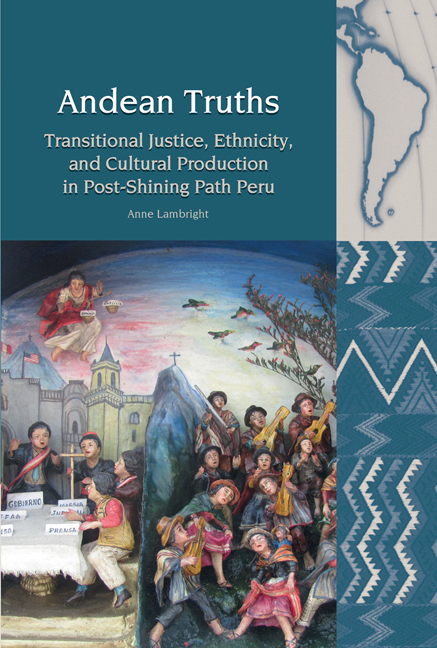Book contents
- Frontmatter
- Contents
- List of Figures
- Acknowledgements
- Introduction
- 1 Sustaining Dominant Narratives
- 2 Transitional Justice and Reconciliation through Identification
- 3 Dead Body Politics
- 4 Towards a Narrative Pachacutic
- 5 Collaborative Truth-Telling
- 6 Reconciling through other Knowledges
- 7 Conclusion
- Works Cited
- Index
7 - Conclusion
- Frontmatter
- Contents
- List of Figures
- Acknowledgements
- Introduction
- 1 Sustaining Dominant Narratives
- 2 Transitional Justice and Reconciliation through Identification
- 3 Dead Body Politics
- 4 Towards a Narrative Pachacutic
- 5 Collaborative Truth-Telling
- 6 Reconciling through other Knowledges
- 7 Conclusion
- Works Cited
- Index
Summary
Some Thoughts on Memory Museums
In one of the earliest critical volumes on truth commissions, its editor Robert I. Rothberg summarizes an essential critique advanced by some critics of such endeavors:
the ‘truth’ that a commission may uncover can only be tentative. Additional truths … will emerge by encouraging conflict and controversy, not by establishing one truth and declaring consensus. Continuing moral debate is desirable in a democracy, and fact-finding in the service of reconciliation must take that into account.
With these thoughts in mind, I turn to a brief reflection on the one memory project that is still receiving significant and sustained public attention in Peru, the Lugar de la Memoria, the Place of Memory, and compare it to two memory museums in Ayacucho.
The Lugar de la Memoria (LUM) is, to this date, a not fully realized effort (in the sense that as of this writing it is not fully open) by the state to create a national museum to commemorate Peru's violent internal conflict. Originally set to open in the wealthy Miraflores district of Lima in April 2011, the museum has run into both financial problems and serious disagreement among interest groups regarding content and design. The Ayacucho museums are local efforts, one by Quechua-speaking mothers of dead and disappeared in Huamanga, the other by a local municipality, Huanta, that explore the conflict from a point of view of the victims of the war. An essential question is why, within the context of Peruvian transitional justice efforts, the official, national, state-sponsored memory museum has been so cumbersome, so difficult to realize (as of mid-2015, it is still not fully functioning), where local, grassroots efforts have succeeded much more readily in providing spaces where Peru can confront its traumatic past.
The CVR spelled out its hopes when it recommended symbolic reparation of victims. For the CVR, symbolic reparations should be ‘a set of civic rituals that, on the one hand, aim to reestablish the social pact and, on the other, seek to represent the will of the state and society that acts of violence and human rights violations like those that occurred will not be repeated.’
- Type
- Chapter
- Information
- Andean TruthsTransitional Justice, Ethnicity, and Cultural Production in Post-Shining Path Peru, pp. 185 - 190Publisher: Liverpool University PressPrint publication year: 2015



